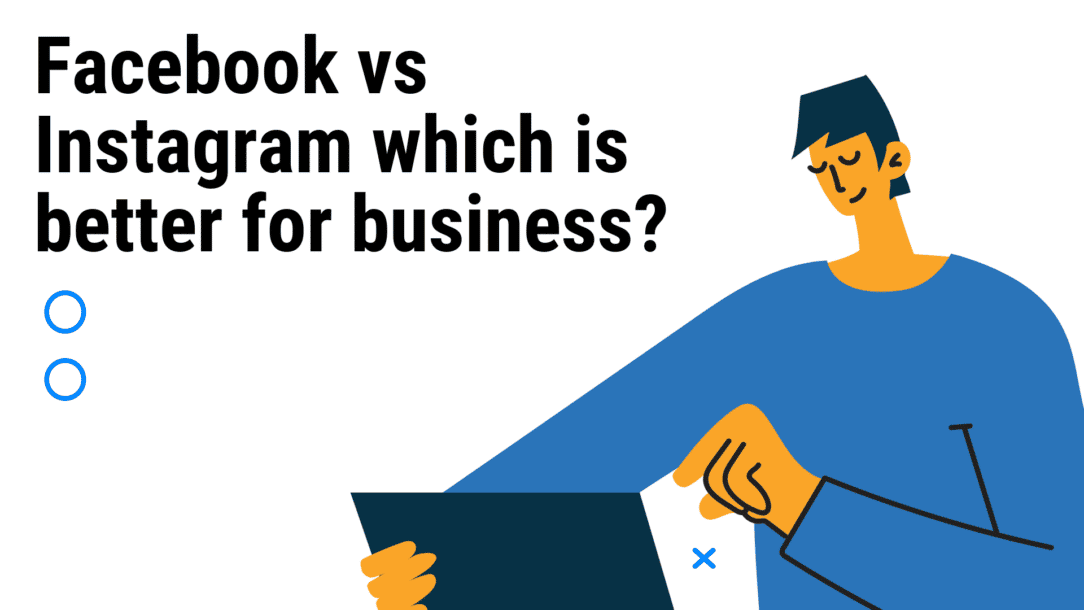Facebook vs. Instagram, which one is better for business? That’s a billion-dollar question that has been on the minds of business owners for years now. When businesses, organizations, and brands want to expand their reach, they often explore the idea of creating a social media presence. The two giant social media networks with billions of active users are the obvious contenders when they are looking to maximize their online presence. So, which one is better for business? Facebook has redefined how people connect online and has become a staple in today’s social media. Around 2.9 billion active users log into Facebook every month, and the site continues to grow.
The possibilities to expand your business with Facebook are endless. Then comes the giant Instagram. Owned by Facebook, Instagram has also experienced massive growth in recent years. With over 1 billion active users and a rapidly growing user base, Instagram is the powerhouse of visual social media.
So, let’s break it down.
When it comes to Facebook vs. Instagram for business, which one is better?
Both Facebook and Instagram offer businesses a great way to connect with potential and current customers. However, the two platforms offer different opportunities that businesses should consider when deciding which is better for them.
Both platforms have become game-changers thanks to the immense use of mobile phones. Users spend more time browsing via mobile on Facebook and Instagram than on any other app.
1) The Number Game:
Like most marketers, you’re probably keen on numbers. The number of likes, comments, shares, and followers are all indications of the success of your social media campaigns, right? The higher the likes, comments, and shares you get, the more successful you are. And of course, the more followers you have, the better.
But this isn’t always the case. Take a look at this example:
If you have 100 followers on Instagram who are genuinely interested in your product or service and post an image that gets a lot of likes, comments, and shares, you’re doing great. But what if you have 10,000 followers on Facebook who are only vaguely interested in what you do? If you post the same image on Facebook, it’s not going to have the same engagement rate as on Instagram.
So, the verdict is we can’t decide unequivocally that one platform is better than the other. Let’s look at the algorithm, retargeting, marketing campaigns, and types of posts on each platform. But first thing first. What’s the difference between Facebook and Instagram?
2) The Difference:
At a high level, the difference between Facebook and Instagram is that Facebook is more of a traditional social media platform where you share any kind of content with your friends. At the same time, Instagram is more specifically a visual platform for sharing images and videos. But there’s a bit more to it than that.
Facebook is a social media platform where you can share anything you want with your friends. You can post text updates, images, videos, articles, and links. It also lets you create groups with like-minded people, join groups that are relevant to your interests, and join events. Instagram is a visual social media platform where you share photos and videos with your followers. Instagram doesn’t let you share links and articles as Facebook does. In short, Facebook has divergences for people to communicate, share and connect with, whereas Instagram is all about visuals.
3) Demographics
Facebook will be a winner if you want to target people of every age group. Statistically, 32% of Facebook users are between 25 and 34, and 18% are 35-44. So, it is a great platform to target people in that age group. Instagram, on the other hand, is dominated by younger users. 31% of Instagram users are between 18 and 24. In fact, more than 50% of Instagram users are younger than 34. So, if you’re targeting a younger demographic, Instagram would be a better option.
If you’re looking for new creative ideas, following popular trends, or want to get inspired by Insta-famous people, it is the place to be. Instagram is a great platform for finding new ideas and trends. Instagram is a better option if it is a brand that wants to be associated with luxury. Your chances of getting user-generated content are also high on the app. Every brand on Instagram has a user-generated content strategy.
The main benefit of Facebook is that you can target any demographic and then further segment it by interest. So, if you want to target people who are interested in specific things, Facebook will be a better platform. But if you’re looking for more general trends and want to see what’s popular right now, Instagram is the better platform.
4) Creativity
Instagram is a great place to be if you’re looking for creative inspiration. There are so many talented people on the app, and you can find inspiration in everything from fashion to food to travel. Do you know the popular campaign by iPhone #ShotoniPhone? This campaign was started on Instagram. It has millions of people who used this hashtag and created a unique campaign that is still going on. In fact, many brands start their social media campaigns on Instagram and then move to Facebook later.
Real-life example:
User-generated content is a big part of Instagram. Take a look at Go Pro’s Instagram account. It is a camera company. However, it’s not just about the cameras. You’ll find many posts that show people using the cameras in interesting and unique ways.
Their hashtag #gopro has over 49 m posts:
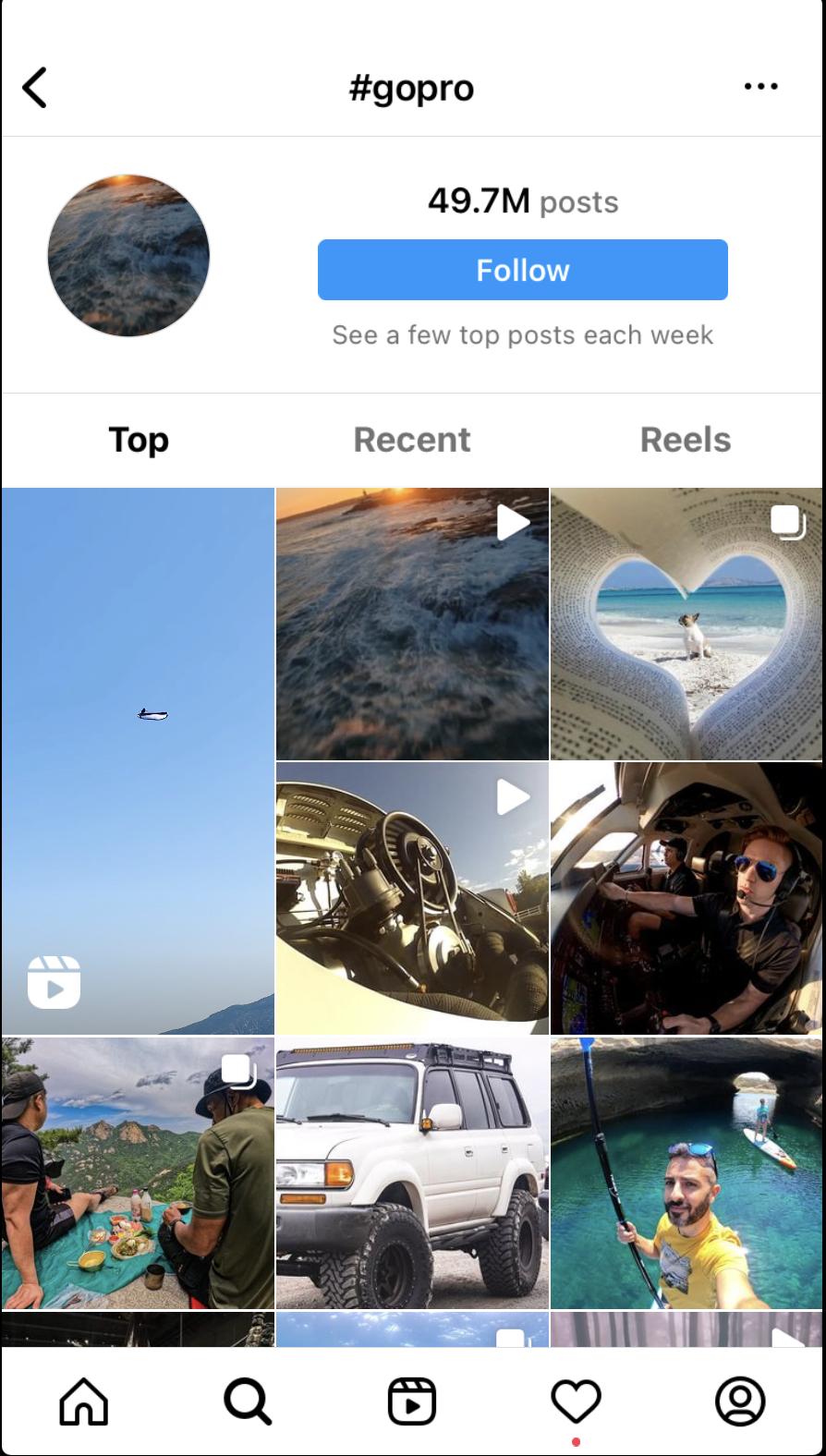
Go Pro Hashtag
User-generated content is a great way to create organic reach and connect with your followers. And you can do it on Instagram much easier than on Facebook. Facebook is a better platform to drive website traffic. Links shared on Facebook have a click-through rate twice as high as links shared on Twitter. So, if you’re looking to drive traffic to your website, Facebook would be a better option.
5) Advertisement
When it comes to advertising, Facebook is the king. It has more than 2 million active advertisers. An average Facebook user clicks on a minimum of 12 ads per month which go up to 18 ads per month. The level of trust in Facebook is high. Ad campaigns on Facebook are very effective in driving sales. You can target people based on their interests, demographics, and even their purchase history. Users click on ads they’re interested in, and as we mentioned before, Facebook users are more likely to click on links than users on other platforms.
Businesses have to be very careful with ads spent on Instagram. On average Facebook CPC campaign is valued at $0.49, while for Instagram, it is $1.09. Since Instagram has a higher CPC, businesses need to be sure that their target audience is on the platform before spending money on advertising. Another study about CTR (click-through rates) showed that Facebook has a higher CTR, which is 3.06%, compared to 0.68% on Instagram.
Overall, Facebook is a better platform for businesses when it comes to advertising. You can target a specific audience, and your ads are more likely to be clicked on. Instagram’s filter options aren’t as diverse as Facebook’s, making your ads blend in with other posts.
6) Algorithm
Here comes the big one. The algorithm is the set of rules that decide which posts show up in your News Feed. In the end, it’s not about posting a lot on Facebook or Instagram. It’s about posting the right content at the right time so that it reaches your target audience.
Quality over quantity.
The Facebook algorithm is constantly changing, so it’s hard to say for sure which platform is better for businesses. But one thing is for sure – businesses need to focus on quality, not quantity. If you remember or ever observed in the past, it was all about the chronological order where posts were presented as they happened. However, Facebook changed that with the algorithm. Posts are now sorted based on what Facebook thinks you’ll be most interested in. This means that businesses need to be more strategic about when they post and what they post. Social media algorithms are all about what users want. They have shifted from chronological feed to relevance feed. Users want not just posts in chronological order but also the best posts at the top of their feed.
If users aren’t engaging with a particular page’s posts, Facebook will rank them lower in the News Feed for those specific users no matter how often they’re posted. So, businesses need to make sure their posts are high quality and interesting if they want them to be seen. Marketers would need to learn, test, and measure how Facebook and Instagram algorithms work. They also need to keep an eye on the changes so they can quickly adapt their posts and strategies.
Here are some key insights that both Facebook and Instagram algorithms look at when considering whether to rank a post in a user’s feed:
Facebook’s Algorithm:
Family and Friend’s posts:
Posts that originate from friends and family are more likely to be ranked higher in the News Feed than those from Pages. This is because Facebook wants to show users content that is most relevant to them, and they believe that friends and family are more likely to post content that is interesting and relevant.
Posts with lots of engagement:
Posts that receive a lot of engagement (likes, comments, shares) are more likely to be ranked higher in the News Feed. This is because Facebook wants to show users content that they’re most likely to be interested in. So, if a post is getting a lot of engagement, it’s probably because people find it interesting. Low Promotional Posts: Facebook never wants users to feel like they’re being bombarded with promotional posts. Unless it’s an ad from Facebook, their algorithm never really likes posts that are too promotional.
Past Relationship with the Brand:
If users have interacted with a brand before, they’re more likely to see that brand’s posts in their News Feed. So, if a user has interacted with a brand before, they’re more likely to see that brand’s posts in their News Feed.
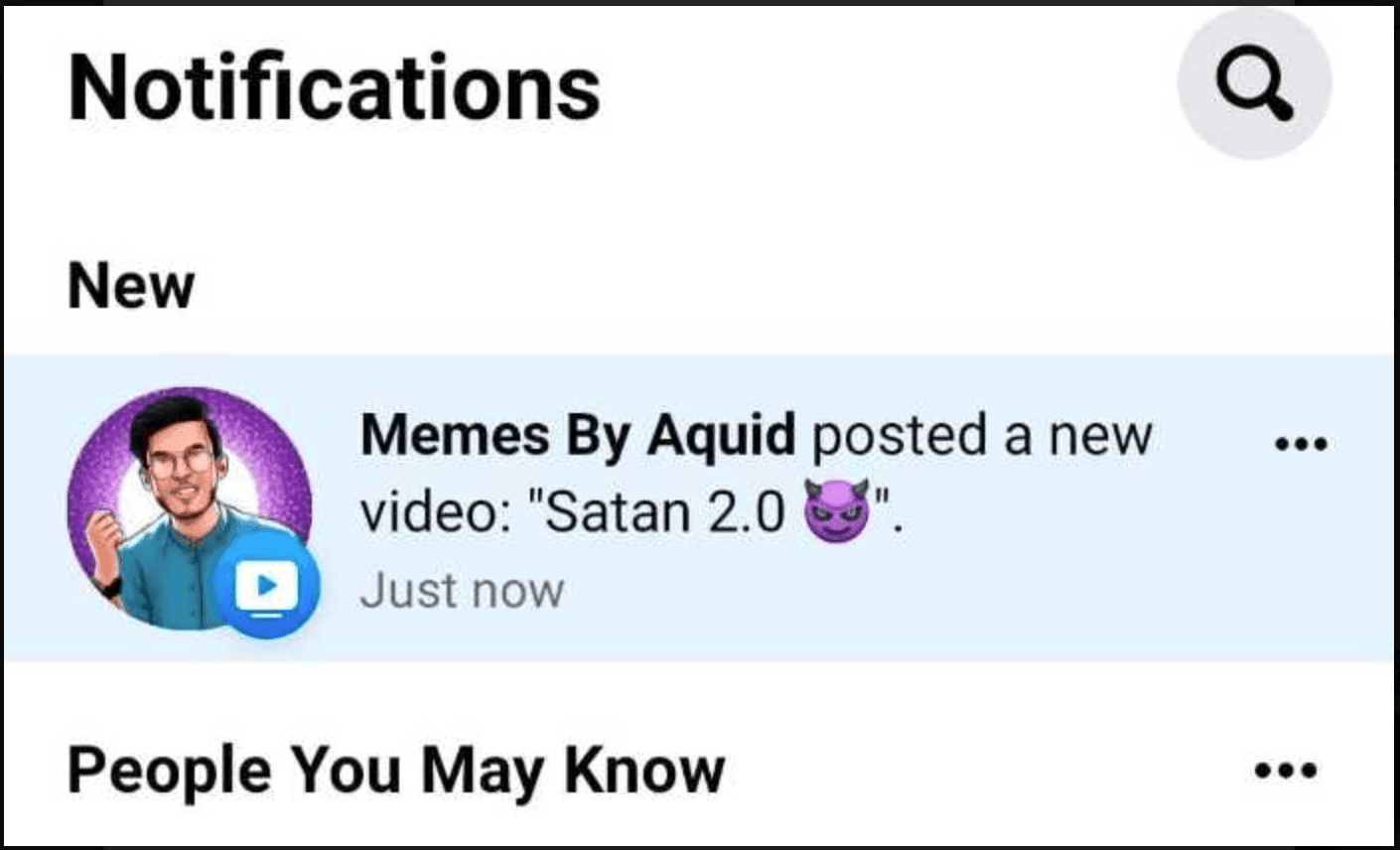
Facebook Notification
You see this notification? It’s from a brand that I’ve interacted with before, so the algorithm is considering me as a relevant
I often engage with this page on Facebook, and the Facebook algorithm shows this post on my News Feed; in fact, I receive notifications for their new videos. In fact, I haven’t even liked their page. That’s how powerful the Facebook algorithm is.
Posts that Create Conversations:
Posts that start conversations are more likely to be ranked higher in the News Feed. Such posts are more likely to be interesting and engaging to users.
Visuals:
Posts with visuals (photos, videos, GIFs) are more likely to be ranked higher in the News Feed than those without. They also tend to get more engagement.
This is likely because visuals are more engaging and interesting than text-only posts.
Instagram’s Algorithm:
Posts with Faces:
Photos with faces are more likely to be ranked higher in the News Feed than those without.
This is because Instagram believes that photos with faces are more interesting and engaging to users.
Relevancy:
Posts deemed to be more relevant to the user will be ranked higher in the News Feed. Instagram takes into account a variety of factors when determining the relevance of a post, including the user’s interests, who posted the photo, and where the photo was taken.
Timeliness:
Posts that are time-stamped more recently are more likely to be ranked higher in the News Feed. This is because Instagram wants to show users the latest posts first.
Posts with Lots of Engagement:
Posts that receive a lot of engagement (likes, comments, shares) are more likely to be ranked higher in the News Feed. This happens because Instagram wants to show users the best posts first.
Popular Hashtags:
Posts that include popular hashtags are more likely to be ranked higher in the News Feed. For instance, if a post includes the hashtag “#love,” it won’t rank because that’s a very vague hashtag, but a post with the hashtag “#nationalspaghettiday” will be more likely to show up in the News Feed because it’s specific.
7) Location:
Posts tagged with a location are more likely to be ranked higher in the News Feed. This is because Instagram wants to show users posts from nearby locations. Location-tagging also gives users an opportunity to explore new places. For instance, if you’re at a restaurant in New York City, and you post a photo of your food, your post is more likely to show up in the News Feed of someone who lives in New York City than it is to show up in the News Feed of someone who lives in, say, Ohio.
8) Type of Content
Instagram prioritizes posts with certain types of content over others. For example, posts with videos are more likely to be ranked higher in the News Feed than those without. Instagram also prioritizes posts from users’ friends and family over posts from brands. Posts from brands are more likely to be ranked lower in the News Feed than those from friends and family. For Facebook, if you place outside links in your posts, Facebook gives you a little less reach. It’s because they want you to stay on Facebook and not leave to go to other websites.
The best strategy to tackle this algorithm criteria is to post links in the comment of your post instead of the post itself. This way, your friends and family who see your post will be more likely to click on the link rather than just seeing it as a line of text.
9) Engagement
Every business depends on engagement to succeed on social media. No matter how great your content is, if you don’t have people engaging with it, you’re not going to see the results you want.
So, how do Facebook and Instagram compare when it comes to engagement?
Instagram’s engagement rates are significantly higher than Facebook’s. According to a study, Instagram posts get 1.60% median engagement, while Facebook posts only get 0.09% median engagement. This is due to a few factors. First, because Instagram is a visual platform, users are more likely to engage with photos and videos than they are with text updates. Second, because Facebook has so much content, users are less likely to see your posts in their newsfeeds.
Real-Life Example:
If you see Cristiano Ronaldo’s profile on Instagram, you will see that he has a whopping 422 million followers, the most by anyone in the world. But if you go to his Facebook profile, you’ll see that he only has 151 million likes.
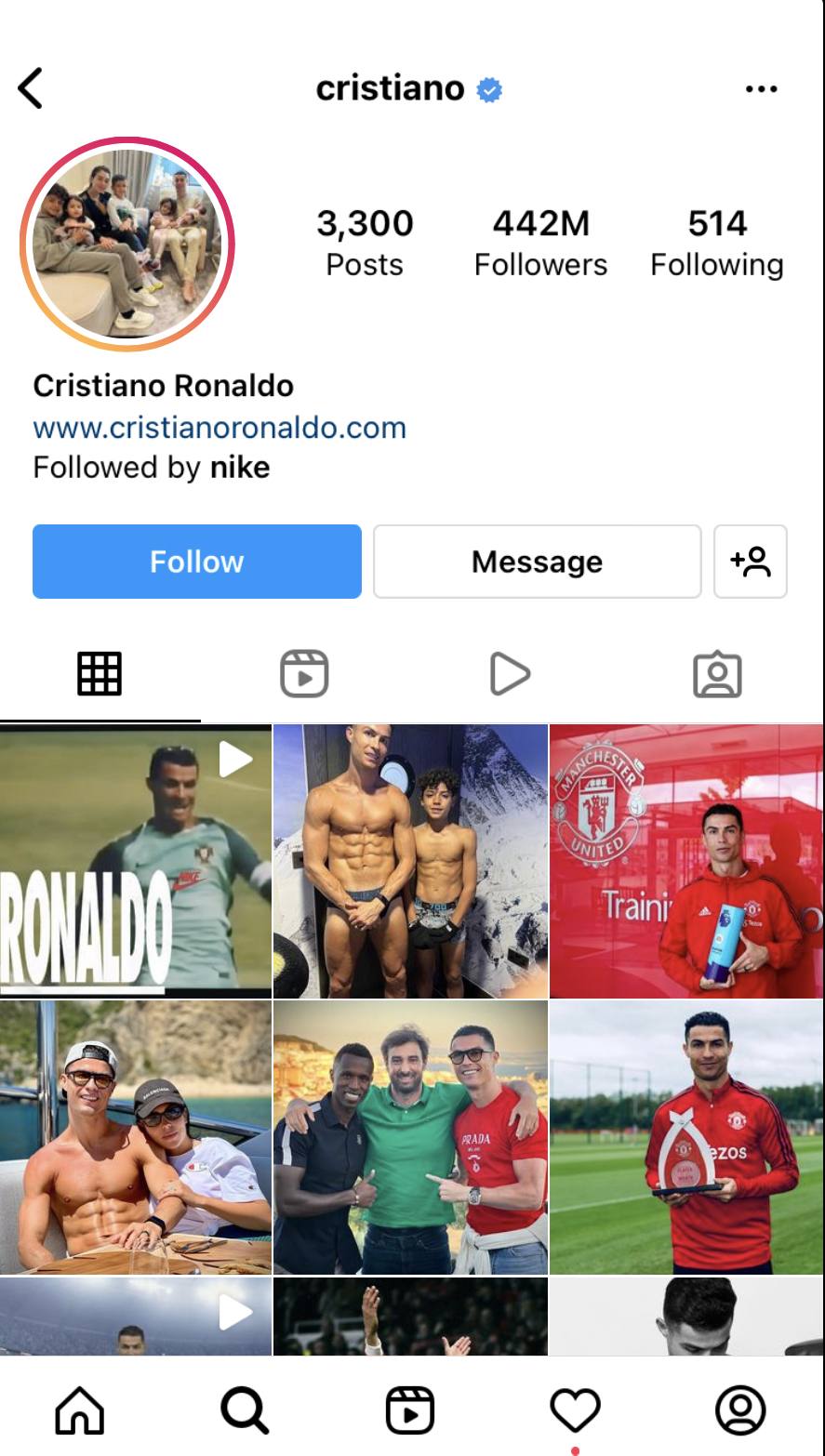
Cristiano Ronaldo’s Instagram Account
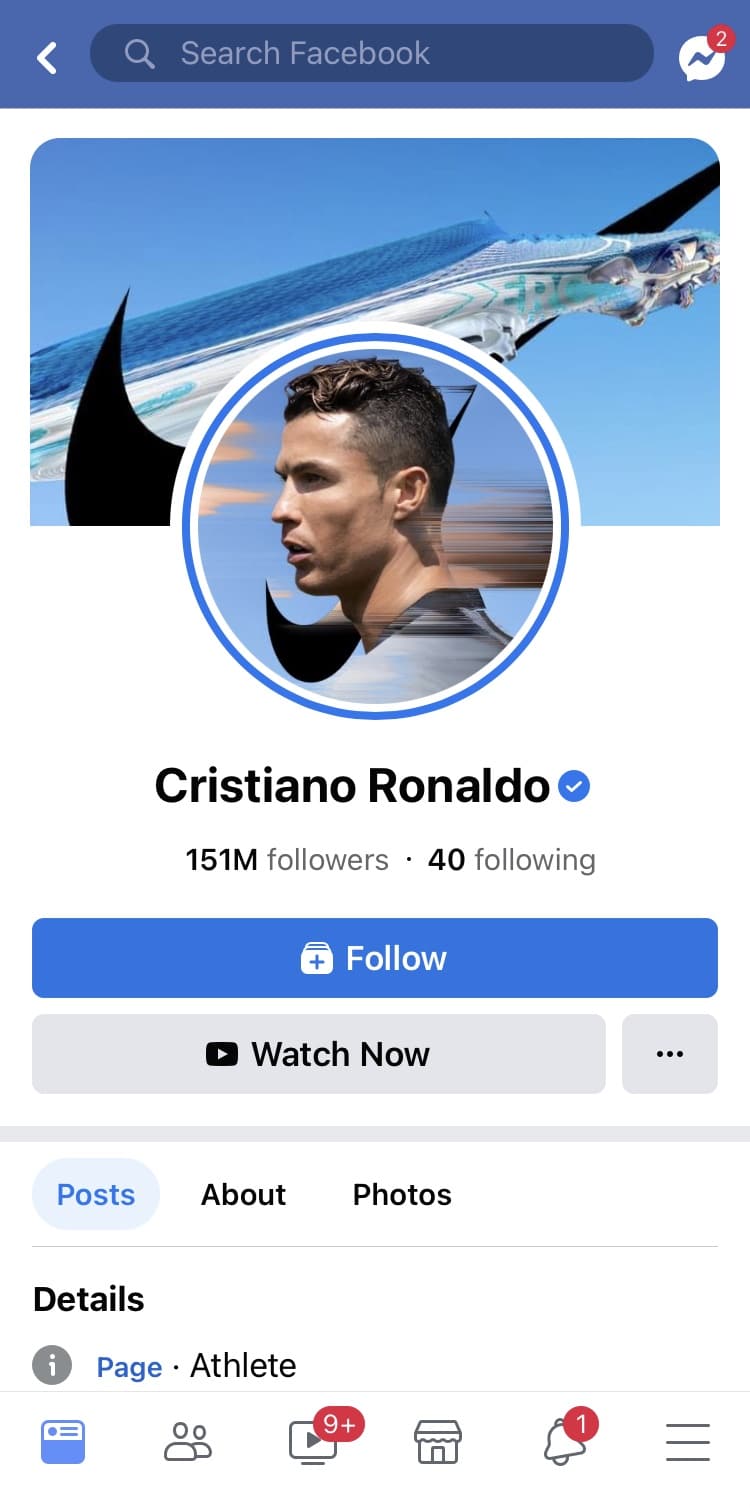
Cristiano Ronaldo’s Facebook Account.
It clearly shows how Ronaldo’s posts get significantly more views and likes on Instagram than on Facebook. The clear reason is more followers but it’s not just the followers. It’s the Instagram algorithm that works this way.
Now, if you see his last campaign about CLEAR shampoo on both platforms, you would see a significant difference in engagement. On Instagram, the post has over 8,556,563 views, while the post has only 237k views. This is an extreme example, but it shows that Instagram is a better platform for engagement.
Facebook post:
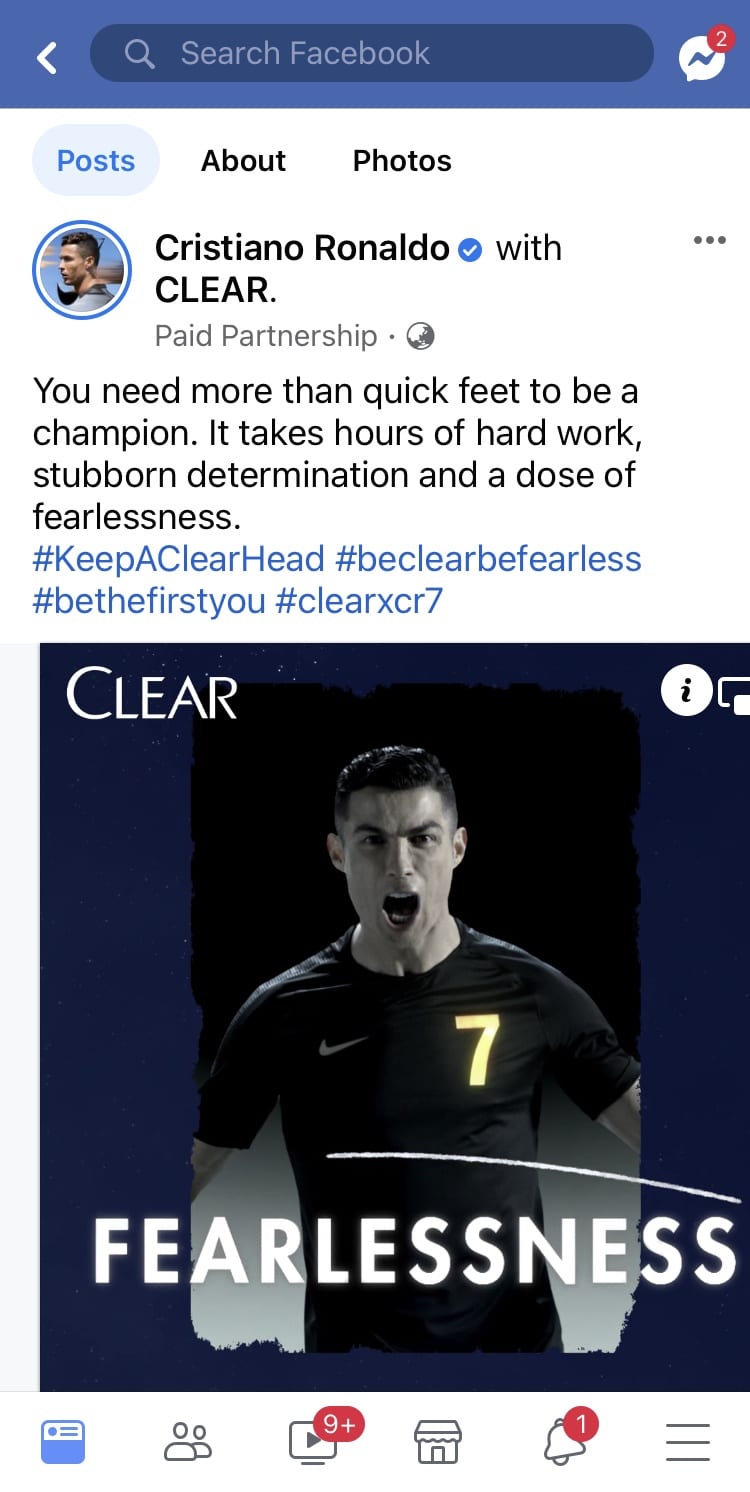
Instagram post:

Promotion for Clear.
Ronaldo is a big name. Even if we analyze a regular clothing brand and don’t consider Ronaldo, Instagram is a better place to be. Take a look at the brand’s Facebook post below. It has about barely 55 likes. On the other hand, its Instagram post has about 228 likes.
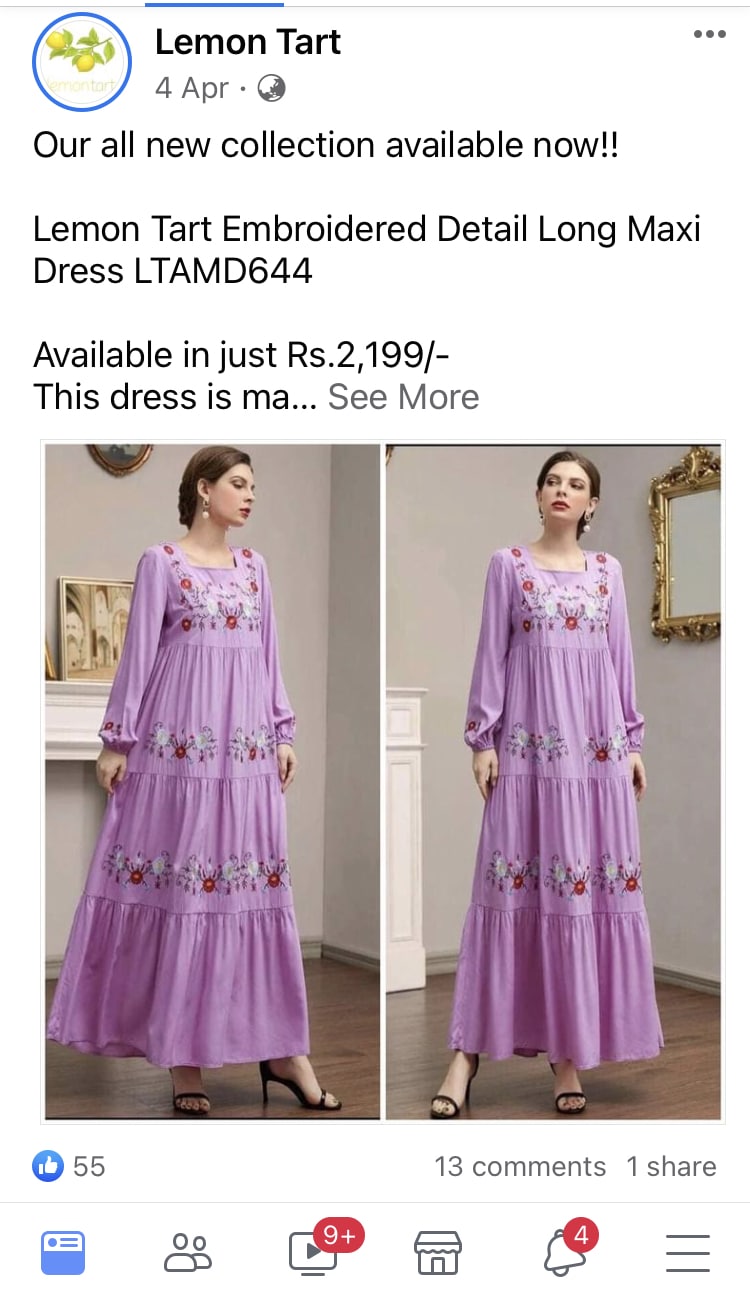
Business Page for Facebook
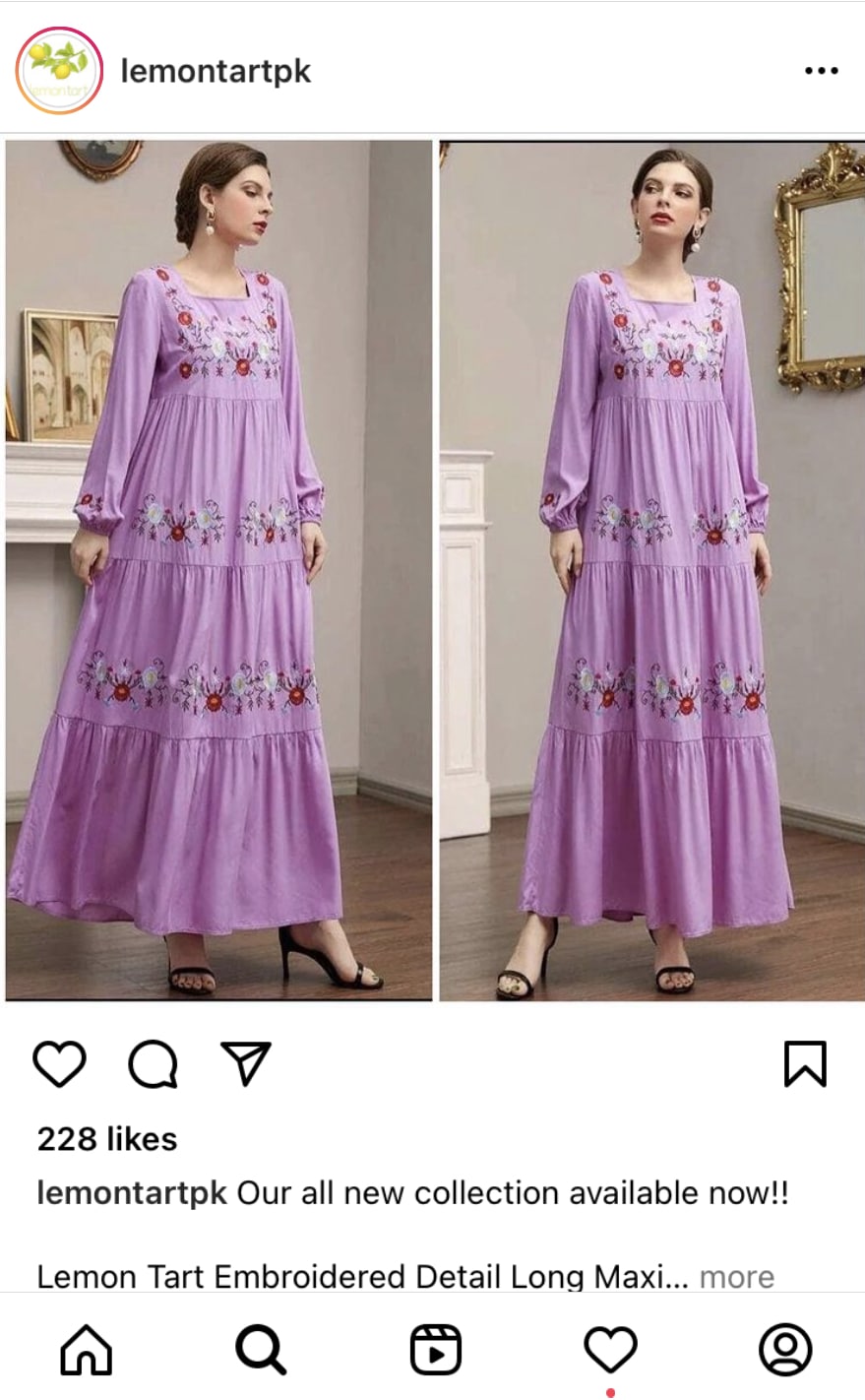
Business Page for Instagram
In this example, it is clear that Instagram provides more engagement for brands.
What’s the Takeaway about Engagement for Businesses?
To create engagement on Facebook or Instagram, you have to be prompt to interact with your followers. Suppose you are a clothing brand. One of your followers comments on your post asking about the price of a particular product. Now imagine 2 scenarios. One, you reply hours later, and in the other, you reply within minutes. In which case do you think the user is more likely to buy the product?
The answer is obvious.
The user is more likely to buy the product when you reply quickly because it shows that you’re responsive and care about your customers. Even if he doesn’t buy at the moment, he is more likely to remember your brand and buy from you in the future. The point is that thousands of brands compete in the same niche in the same industry as you. You have to be prompt with engagement if you want to stand out in this situation.
But digital marketing is so fast today that you can’t rely on human services to engage with your followers all the time. You can’t be online 24/7. This is where automation comes in.
10) Automation is the Future!
Imagine a world where you post on Instagram and Facebook, and chatbots do all your engagement. The quicker you engage with your followers, the more likely they are to buy from you or use your services. That’s what Instagram and Facebook automation does. It helps you automate comments, replies, mentions, and direct messages. This means that even if you’re not online, your chatbots engage with your followers on your behalf.
Check this example from Spotify:
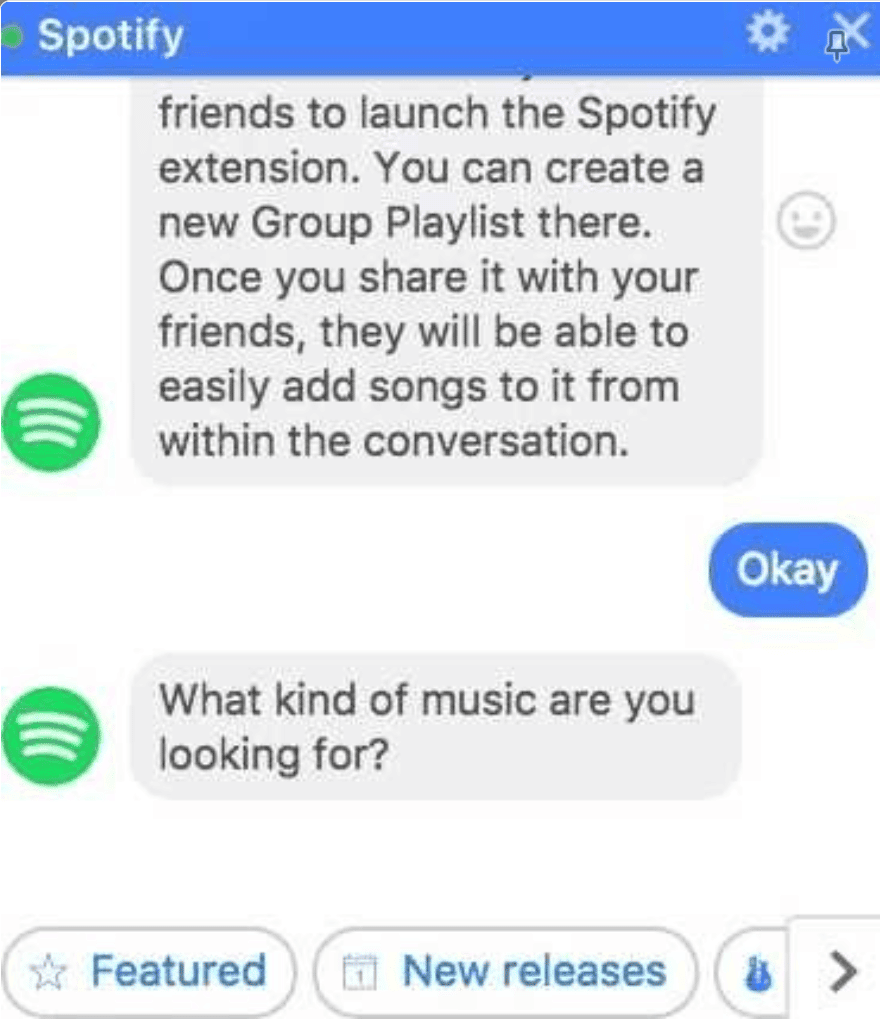
Look how realistic yet automated this response looks. It’s not a copy-paste message. It is tailored to the user’s experience. This is what you can achieve with automation. When you use Clepher to help you automate your business on social media, this is what you get:
- 1) More Engagement
- 2) More Sales
- 3) More Time to Focus on What Matters
- 4) Better Customer Service
- 5) Increased ROI
How do Chatbots Help With Engagement on Social Media?
Instagram and Facebook chatbots help you with engagement in two ways:
- 1) By Automating Comments
- 2) By Automating Replies
Let’s see how this works.
When you automate comments, you set up certain keywords. Whenever someone uses one of those keywords in their comment, the chatbot automatically leaves a comment on their behalf. This is how you can use automation to increase engagement on your posts. You can also automate replies. Suppose someone sends you a direct message on Instagram asking about your product. With automation, you can set up a message automatically as soon as someone sends you a direct message. This saves you time, but it also ensures that all your followers get a quick reply regardless of when they message you. This again increases engagement and makes your followers feel valued.
What’s the Takeaway?
The takeaway is that automating your business on social media is the future. It helps you increase engagement and sales while freeing up your time to focus on what matters. There are many advantages to using a chatbot for your business. Here are 5 of the most important ones:
- 1) More Engagement
- 2) More Sales
- 3) More Time to Focus on What Matters
- 4) Better Customer Service
- 5) Increased ROI
If you’re not using a chatbot for your business yet, now is the time to start. Automation is the future of social media marketing! Though Instagram has a better engagement rate than Facebook, you can’t deny the importance of Facebook as well when it comes to targeting via ads. Both platforms need quick and prompt engagement in order to succeed.
Final Verdict:
Both Facebook and Instagram are important platforms for businesses. While Instagram is better for engagement, Facebook is better for ads. The best strategy is to use both platforms to get the most out of your social media marketing. Both platforms can benefit from using a chatbot when it comes to automation. All you need is to set up the right keywords and questions so that your chatbot can engage with your followers on your behalf.
If you’re not using a chatbot for your business yet, now is the time to start. Automation is the future of social media marketing! 2022 is seeing a significant increase in chatbots for e-commerce get, so be ahead of the curve and start using one for your business today.
Related Posts

